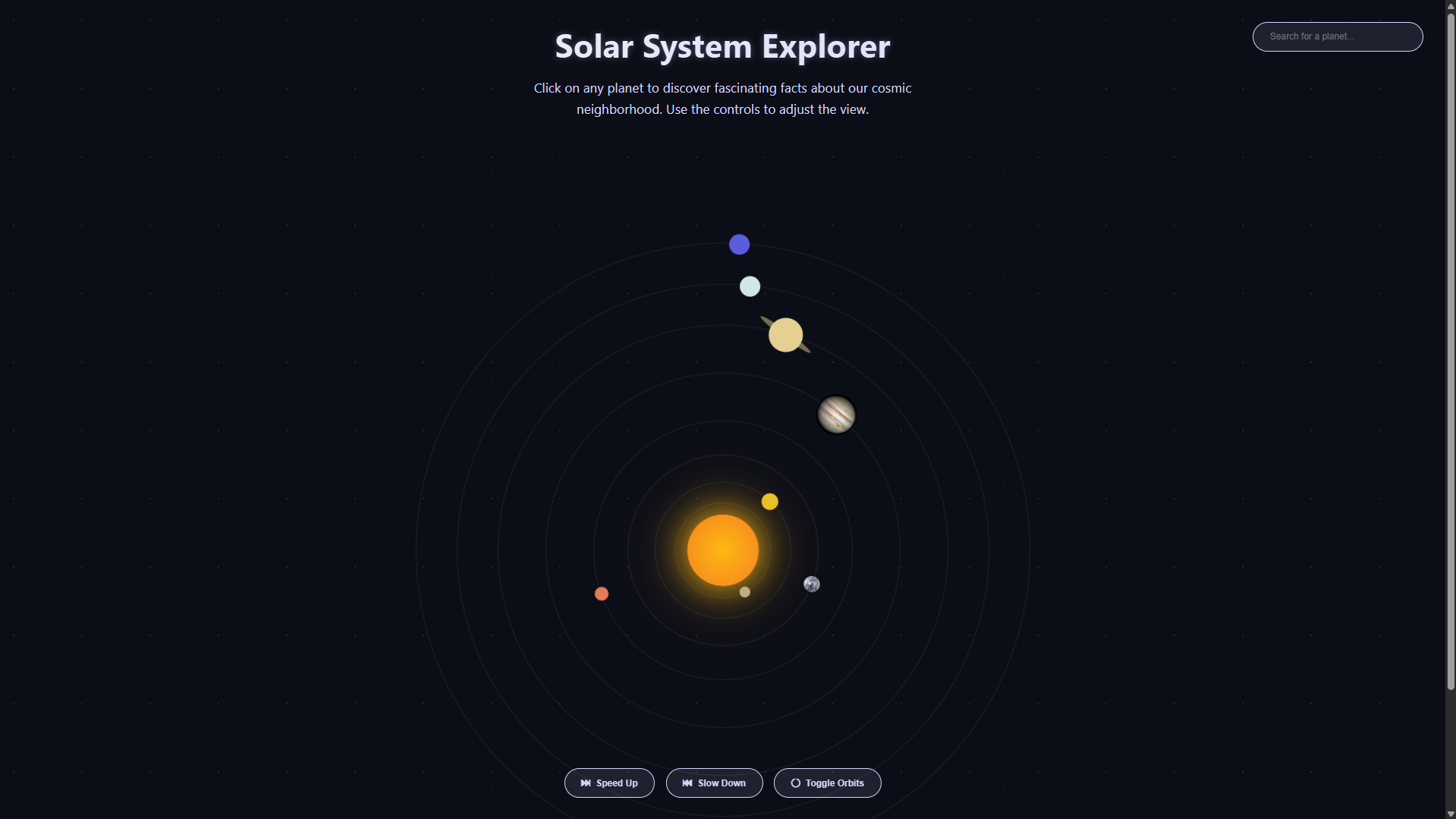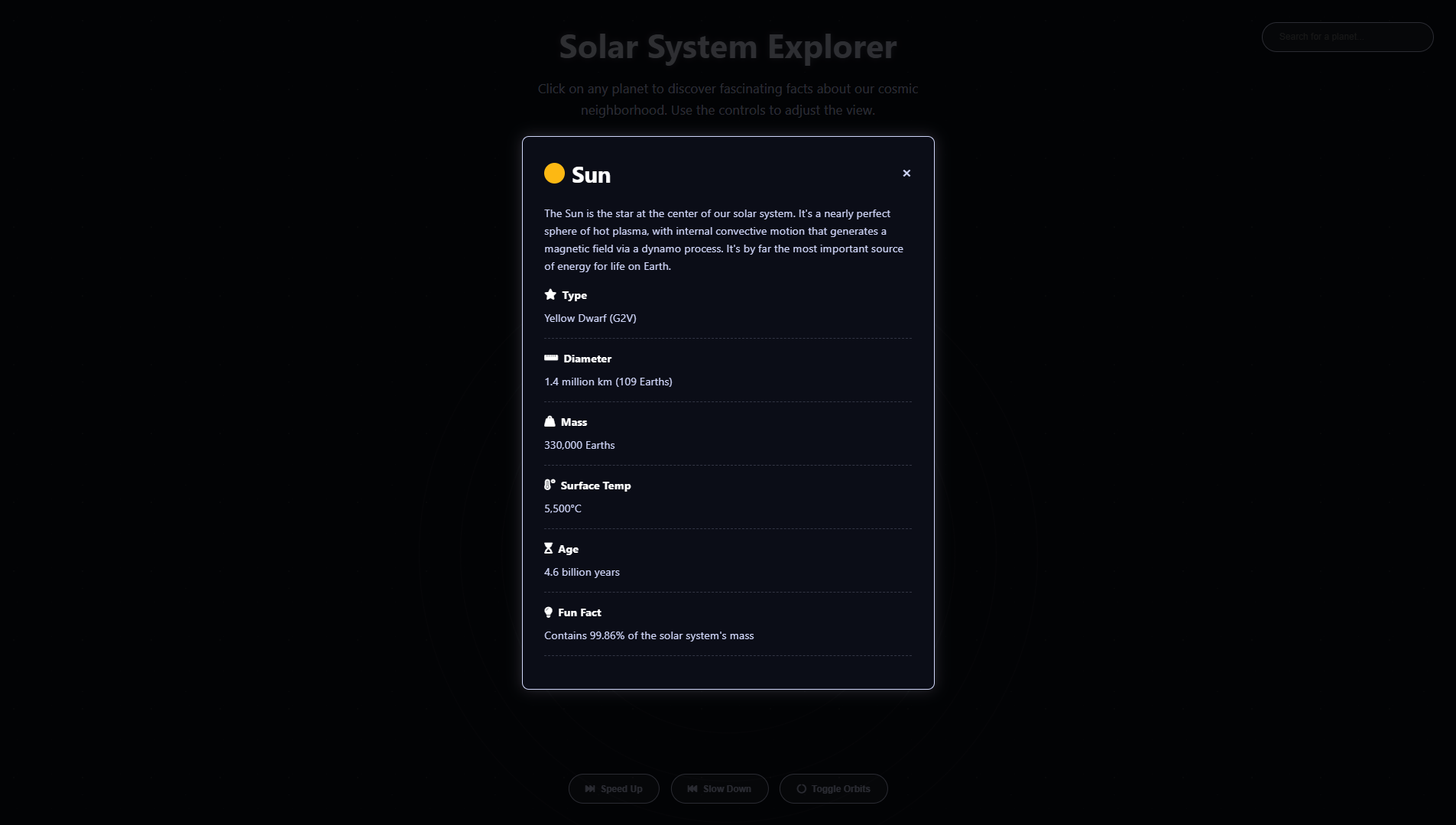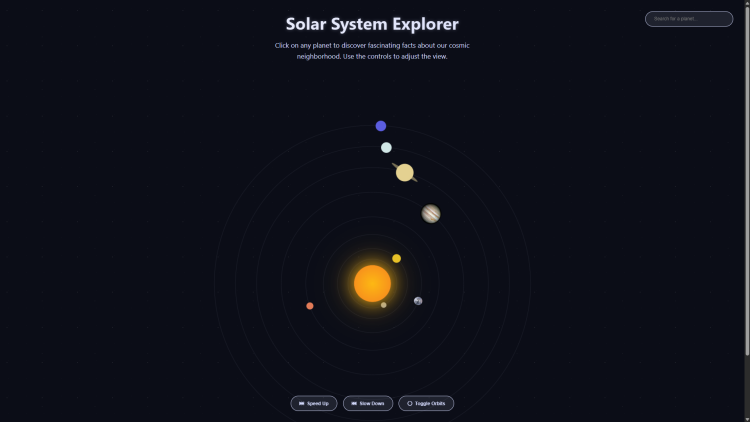Solar System Explorer App Using HTML, CSS and JavaScript with Source Code
Welcome to the Solar System Explorer App – a captivating and interactive way to explore our celestial neighborhood! This web-based experience lets you journey through the solar system with animated planets orbiting the Sun in real-time. Each planet is clickable and reveals a modal full of interesting facts, such as its size, distance from the Sun, and other scientific highlights. Whether you're a space enthusiast, student, or just curious about the cosmos, this app offers an engaging way to visualize and learn about the planets.
Built using HTML, CSS, and JavaScript, the Solar System Explorer includes smooth animations, orbit speed controls, tooltips, search functionality, and responsive design. Users can hover to identify planets, click to dive into their details, and even adjust how fast they orbit. It's a fun, educational, and visually rich tool designed to bring space exploration to your fingertips – right from your browser.
You may also check this simple HTML, CSS and JavaScript project:
- Image Filtering App
- Event Calendar App
- Advanced To-Do List
- Click the Color Not the Text
- Text Effects Generator
Features:
Animated Orbiting Planets: Each planet revolves around the Sun with accurate relative timing.
Planet Information Modal: Click on any planet (or the Sun) to view detailed descriptions and fun facts, including size, distance, and orbit speed.
Interactive Tooltips: Hover over a planet to see its name in a tooltip.
Orbit Speed Control: Increase or decrease the rotation speed of the planets.
Toggle Orbits: Show or hide the orbital paths of the planets.
Live Search: Start typing a planet’s name to quickly highlight it in the simulation.
Smooth Animations: Fade-in effect on load and highlight animations for selected or searched planets.
Responsive User Experience: Tooltips follow the cursor, and modals close on Escape key or clicking outside.
Technologies Used:
HTML5 – for the structural layout of the app.
CSS3 – for styling, animations, and orbit rendering.
JavaScript (ES6) – for dynamic interactions, planet generation, modal pop-ups, tooltips, search functionality, and control buttons.
How to Use:
Open the App in your browser — no installation required.
Hover over a planet to see its name.
Click on a planet or the Sun to open a detailed modal with information and facts.
Use the Speed Up / Slow Down buttons to adjust orbit speeds.
Toggle the visibility of orbits using the “Toggle Orbits” button.
Use the search bar to find a planet by typing at least 2 letters.
Press the Escape key or click outside the modal to close it.
Sample Screenshots of the Project
Landing Page

Modal

How to Run?
- Download the provided source code zip file.
- Extract the downloaded zip file.
- Open the html file and you are now ready to go!
Video Demonstration for Installation/Setup:
Conclusion:
In conclusion, the Solar System Explorer App offers an immersive and educational experience that brings the wonders of our solar system to life. With interactive features, smooth animations, and detailed planetary facts, it’s a perfect tool for students, educators, and space enthusiasts alike. Powered entirely by HTML, CSS, and JavaScript, this app showcases how web technologies can be used to create engaging and informative visualizations that make learning about space both fun and accessible.
That's it! I hope this "Solar System Explorer App Using HTML, CSS and JavaScript" will assist you on your programming journey, providing value to your current and upcoming projects.
For additional tutorials and free source codes, explore our website.
Enjoy Coding :>>
Note: Due to the size or complexity of this submission, the author has submitted it as a .zip file to shorten your download time. After downloading it, you will need a program like Winzip to decompress it.
Virus note: All files are scanned once-a-day by SourceCodester.com for viruses, but new viruses come out every day, so no prevention program can catch 100% of them.
FOR YOUR OWN SAFETY, PLEASE:
1. Re-scan downloaded files using your personal virus checker before using it.
2. NEVER, EVER run compiled files (.exe's, .ocx's, .dll's etc.)--only run source code.

